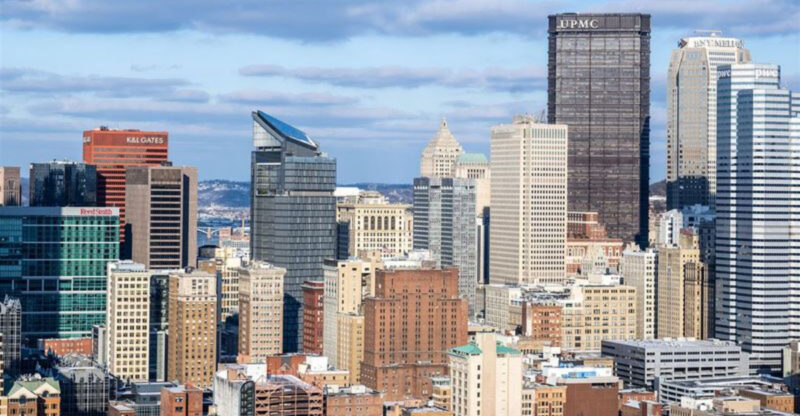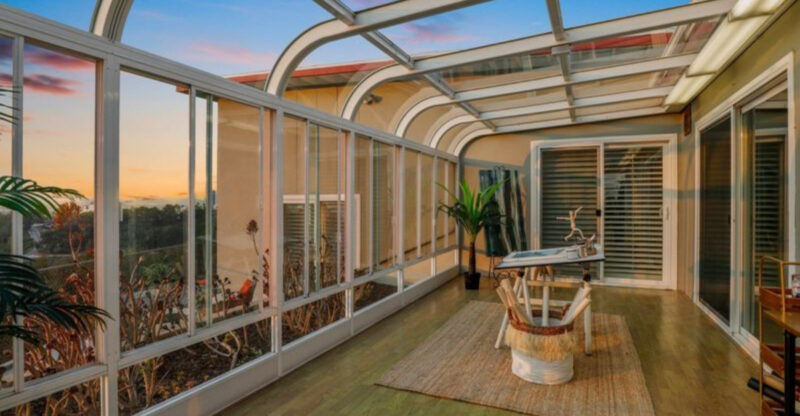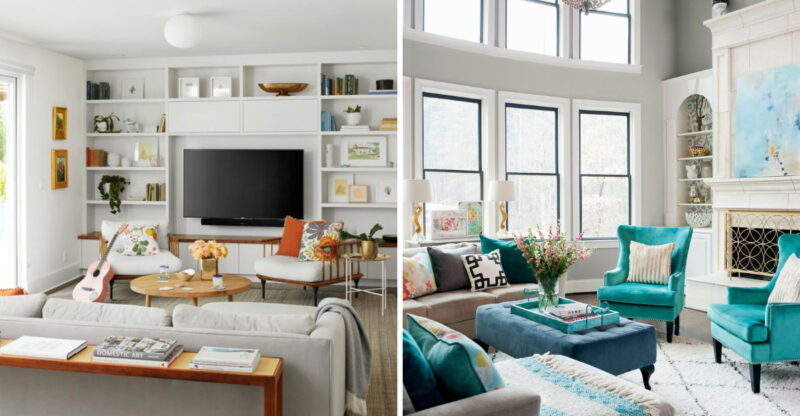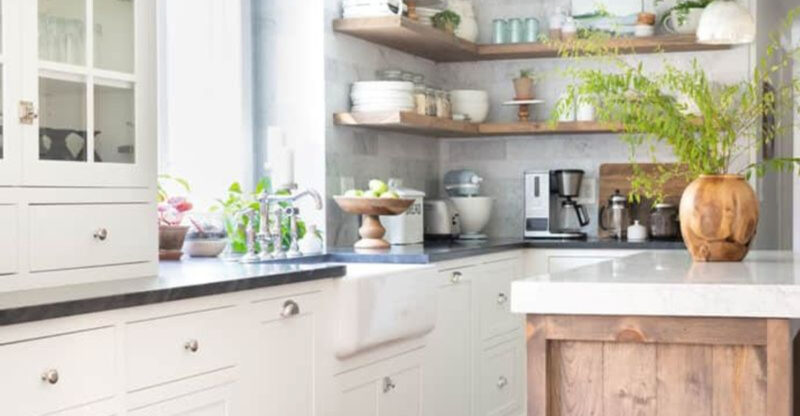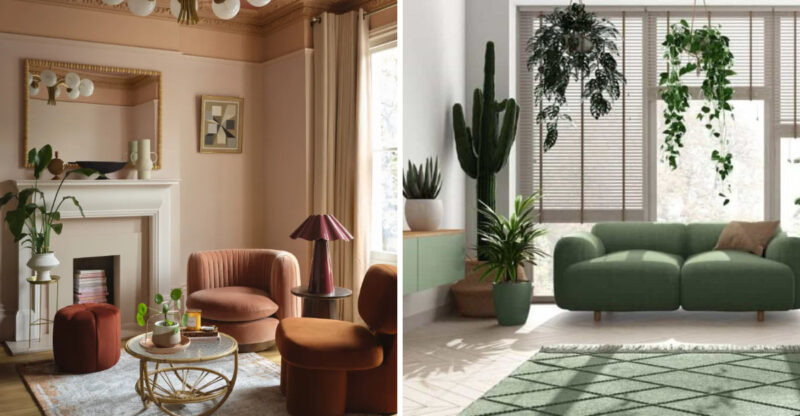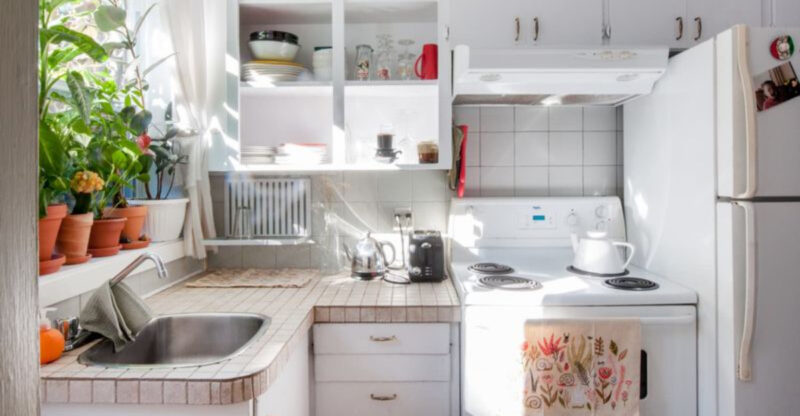10 Kitchen Trends That Don’t Belong In The Arizona Desert (And What Does)
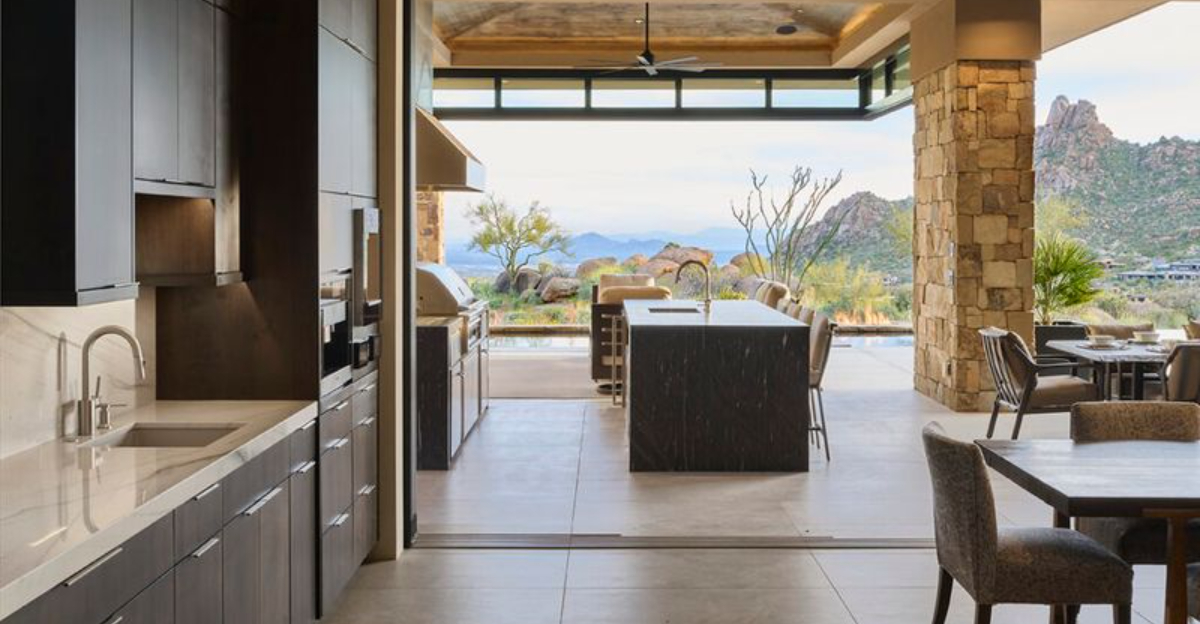
Living in the Arizona desert means your kitchen design should work with, not against, the unique climate and landscape.
Some kitchen trends that look stunning in magazines can become impractical nightmares when faced with our scorching summers and dusty conditions.
I’ve seen countless homeowners make costly mistakes by following nationwide trends without considering our local environment. Let’s explore which kitchen trends to avoid in our desert climate and which ones actually enhance our Southwestern homes.
1. All-White Kitchens: A Dust-Revealing Disaster
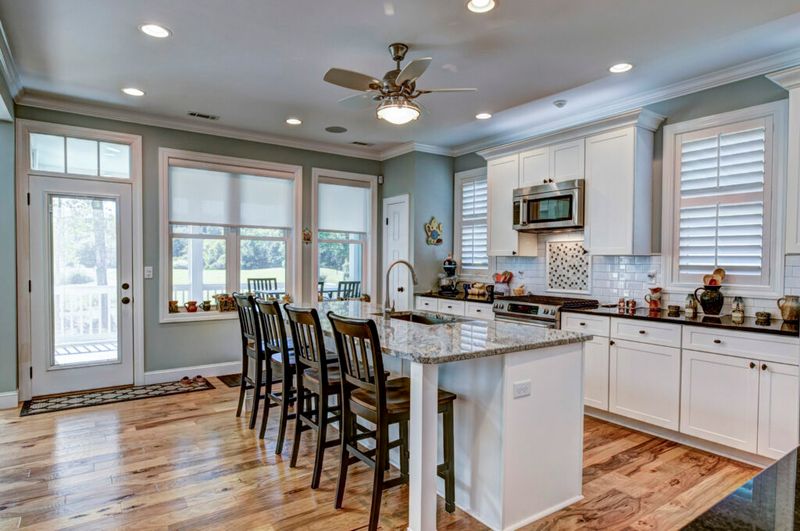
Pristine white kitchens might look fabulous in coastal homes, but they’re a maintenance nightmare in our dusty desert environment. The constant battle against visible dust and dirt will drive you crazy!
Arizona’s famous haboobs deposit fine dust particles everywhere, making those gleaming white surfaces look dingy within hours. Plus, harsh sunlight streaming through windows can create a blinding glare on white surfaces during our intense summer days.
2. Glossy Finishes: Fingerprint Magnets In The Heat
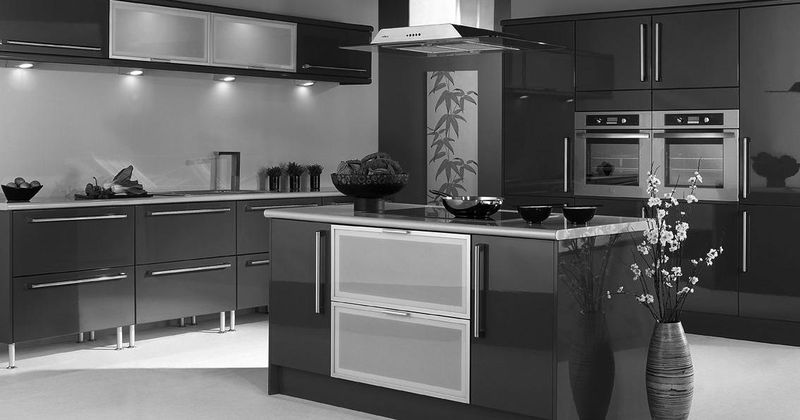
Glossy cabinet finishes create stunning reflections but turn into fingerprint showcases in our dry climate. Static electricity from low humidity makes dust cling to these surfaces like magnets.
When summer temperatures soar, those beautiful glossy surfaces become sticky and uncomfortable to touch. The intense desert sun also accelerates fading on high-gloss finishes, causing uneven coloration over time that’s nearly impossible to fix without complete replacement.
3. Heavy Dark Cabinetry: Heat Traps In Disguise
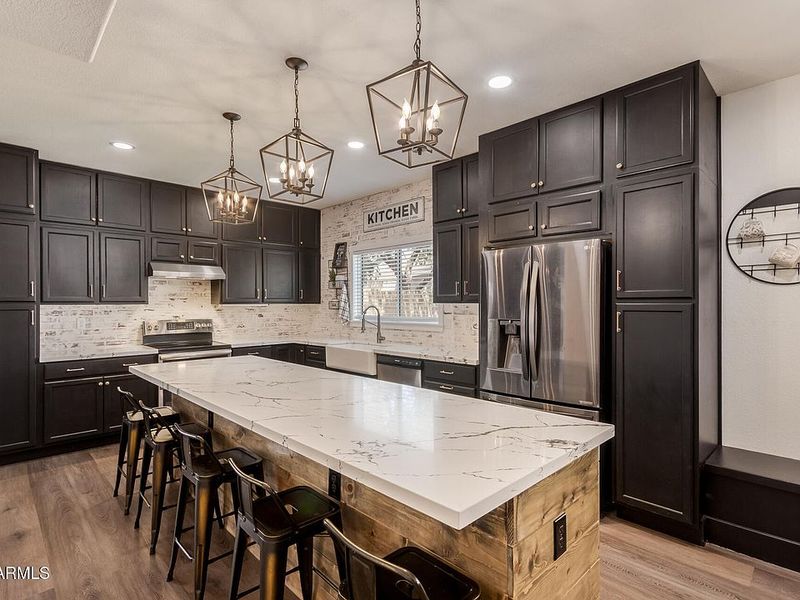
Dark cabinets absorb heat like nobody’s business in our sun-drenched climate. Your kitchen will feel like an oven during summer months, forcing your AC to work overtime.
Heavy cabinet styles also create a visual weight that fights against the airy, open feeling most desert homes strive for. Those chunky dark wood cabinets might look regal in Northern homes, but they feel oppressive when temperatures hit triple digits.
4. Marble Countertops: Beautiful But Impractical
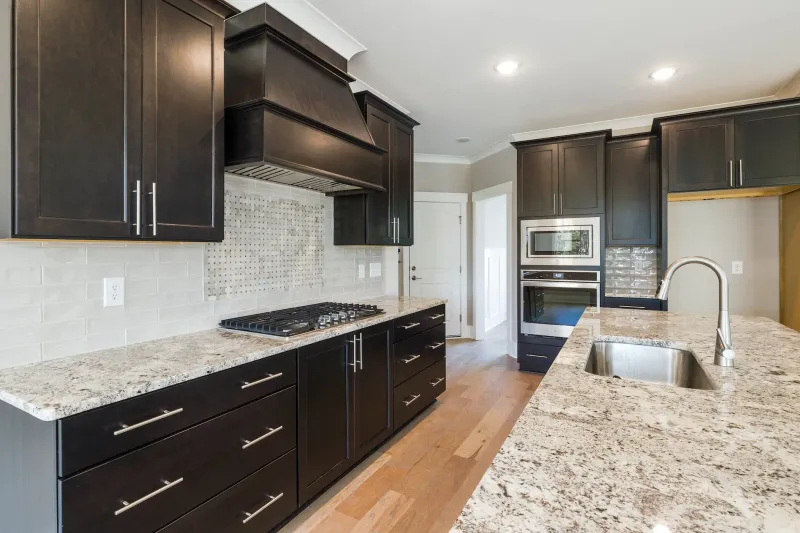
Do marble countertops crack under the temperature fluctuations common in desert homes? Yes, and it’s only because our dramatic day-to-night temperature swings put stress on this naturally porous stone.
Hard water, common throughout Arizona, leaves stubborn mineral deposits on marble that are difficult to remove. The porous surface also stains easily from citrus fruits like our local lemons and grapefruits, requiring constant vigilance and maintenance that quickly becomes tiresome.
5. Overly Industrial Design: Metal Meltdown
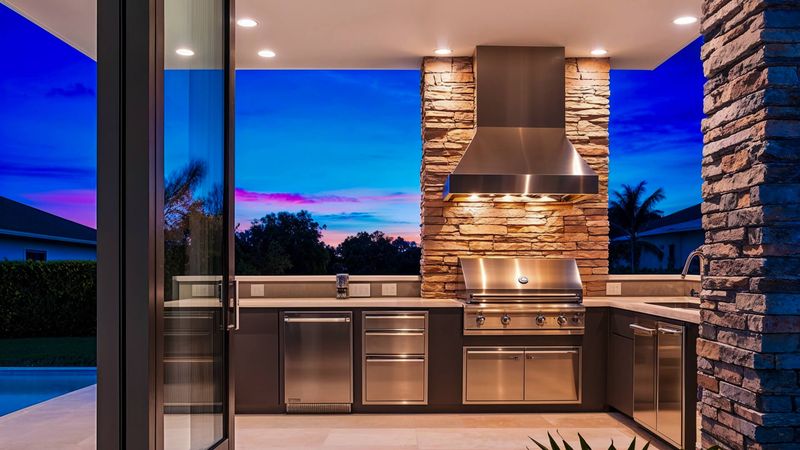
Metal surfaces in industrial-style kitchens become dangerously hot during summer months. Touching a metal cabinet pull after it’s been hit by direct sunlight can feel like grabbing a hot pan!
The stark, cold aesthetic of industrial design clashes with our warm desert surroundings. Those concrete floors might look trendy, but they’ll feel uncomfortably cold during winter mornings. They’ll also radiate heat during summer afternoons, creating an environment that fights against our natural landscape.
6. Open Shelving: Dust Collection Stations
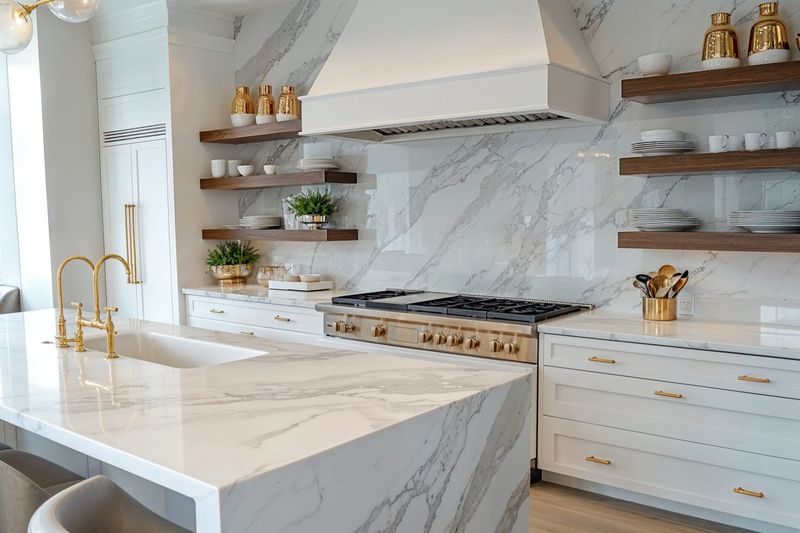
In our desert environment, open shelving quickly becomes dust central. Those Instagram-worthy styled shelves require constant cleaning as fine dust particles settle daily.
The dry climate means dishes and glassware need frequent washing even when unused, as dust accumulates rapidly. Wind events like monsoon storms can blow dust through the tiniest cracks, leaving a fine layer on everything exposed.
It’ll turn your open shelving display into a maintenance headache.
7. Cool-Toned Color Palettes: Fighting Against Nature
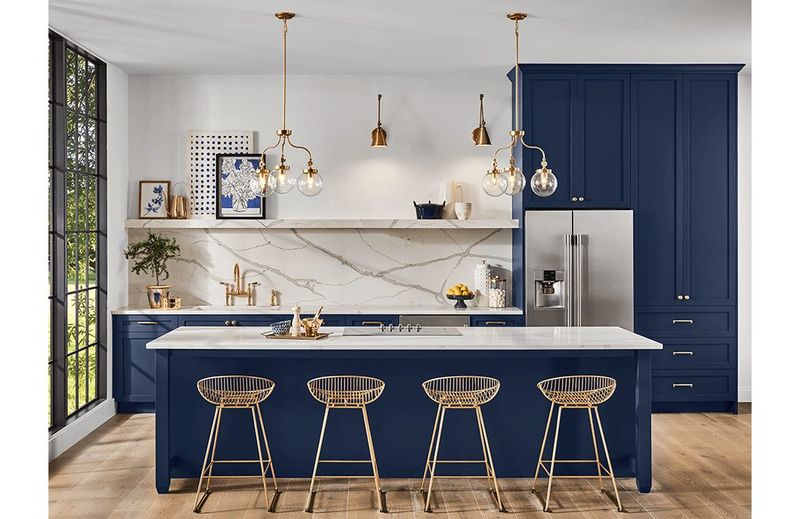
Cool blues and grays fight against our naturally warm landscape, creating visual tension rather than harmony. These colors feel psychologically cooling but ultimately clash with our golden sunlight.
Cooler tones fade dramatically in our intense UV exposure, requiring more frequent repainting or refinishing. When surrounded by desert views through windows, cool-toned kitchens create a jarring transition between indoor and outdoor spaces instead of the seamless flow most desert homes strive for.
8. Matte Black Fixtures: Heat Absorbers Supreme

Do dark fixtures make sense in sun-drenched desert kitchens? In Arizona homes, black faucets can become uncomfortably hot to the touch during summer months. Especially in kitchens with skylights or large windows.
Hard water spots also show dramatically on dark matte surfaces, requiring constant wiping. The contrast between bright desert light and black fixtures can be harsh. It often works against the soft, diffused quality of natural light that makes desert homes so inviting.
9. Cluttered Coffee Bars: Wasted Space In Small Kitchens
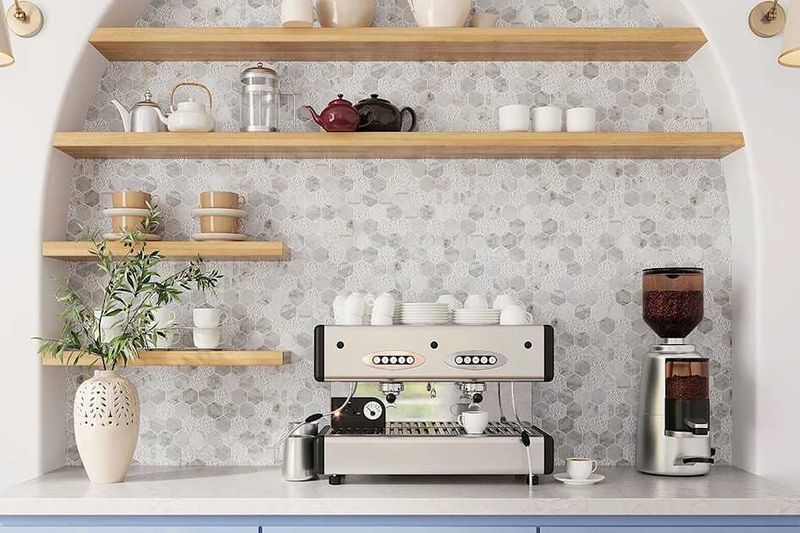
Elaborate coffee stations consume valuable counter space in our typically modest-sized desert homes. These dedicated zones often go unused during hot months when iced beverages are preferred.
Coffee beans degrade quickly in our dry heat unless stored in special containers. The reality of maintaining these Instagram-worthy stations rarely matches the fantasy. Especially when summer temperatures make standing near small appliances generating additional heat feel like torture.
10. Farmhouse Style Everything: Out Of Place In The Desert
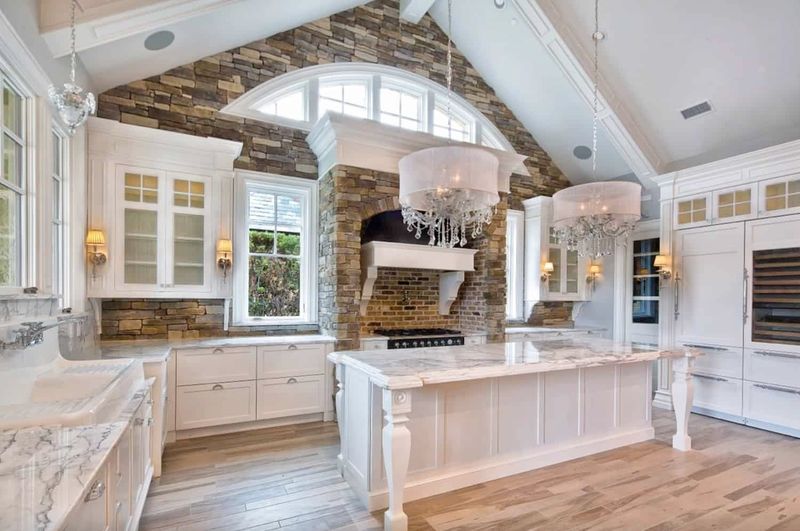
Is rustic charm always a good fit for the desert? Shiplap walls and weathered wood accents, borrowed from rainy, green regions, often feel geographically out of place in Southwestern homes. The look creates a visual disconnect with Arizona’s warm, earthy surroundings.
White farmhouse sinks, while charming in theory, show every speck of our mineral-rich hard water. Those apron-front designs may shine in Vermont, but here they collect dust and water spots, demanding constant upkeep that quickly becomes exhausting.
11. Natural Wood Cabinets: Desert-Inspired Perfection

Light natural wood cabinets mirror our desert landscape beautifully. The warm honey tones complement our sunsets and terrain while hiding dust better than darker or lighter extremes.
Wood’s natural insulating properties help maintain comfortable temperatures year-round. Species like alder and white oak strike the perfect balance between durability and beauty. They’re aging gracefully with minimal maintenance while developing a rich patina that tells the story of your desert home.
12. Terracotta And Earth-Toned Tile: Speaking The Desert’s Language
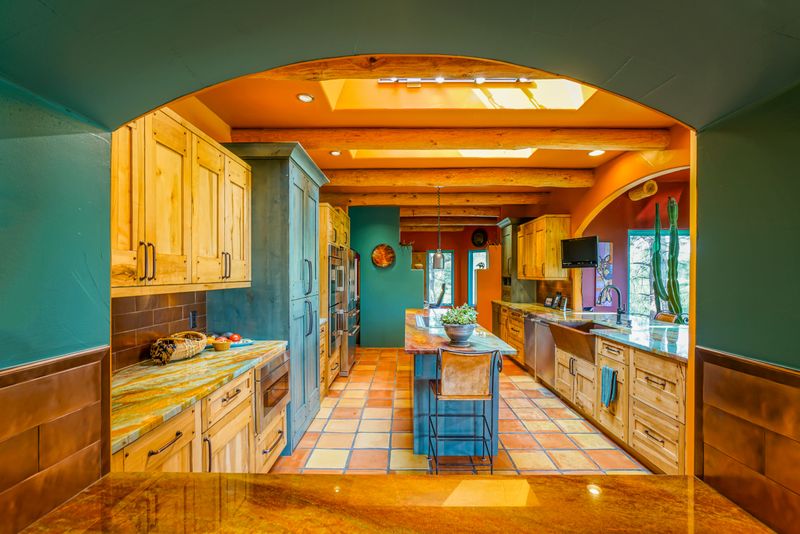
These terracotta tiles connect your kitchen to our region’s architectural history. The earth-toned surfaces hide dust between cleanings while adding authentic Southwestern character.
The natural variations in handmade terracotta create visual interest that manufactured tiles can’t match. These tiles maintain comfortable temperatures underfoot year-round, staying cool in summer and warming quickly in winter. A practical choice that also happens to be stunning.
13. Quartz Countertops: Heat And Stain Resistant Champions
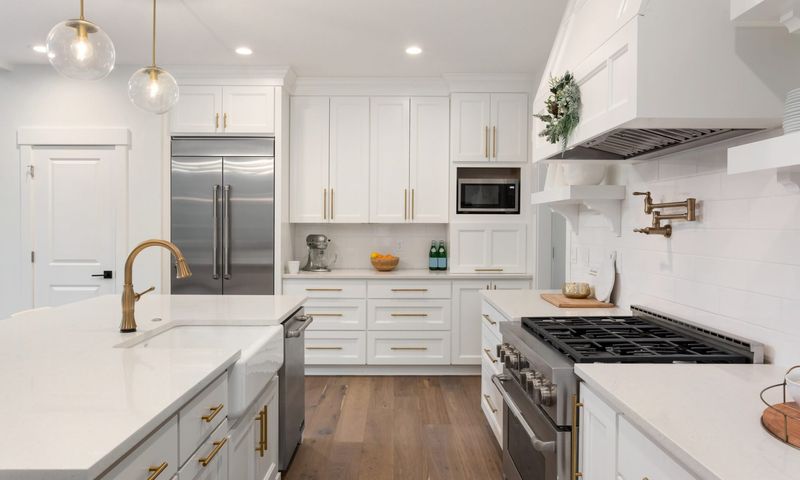
Engineered quartz handles our temperature fluctuations with ease. Unlike natural stone, these surfaces resist staining from our citrus fruits and local red wines.
The non-porous surface prevents bacterial growth in our hot climate. Many quartz options mimic the look of concrete or natural stone while offering superior performance in desert conditions.
It’s delivering beauty without the maintenance headaches that plague many Arizona homeowners.
14. Light Warm Neutrals: Harmonizing With The Landscape
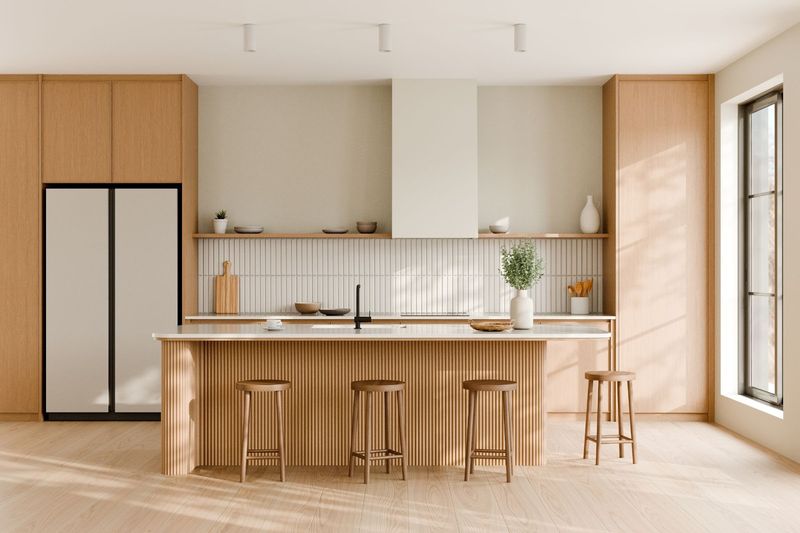
Warm beige and sand tones create visual continuity with our desert surroundings. These colors reflect rather than absorb heat, keeping kitchens naturally cooler.
Light neutrals provide the perfect backdrop for colorful Southwestern accents without competing for attention. The subtle warmth in these hues creates a welcoming atmosphere even on the hottest days, making your kitchen feel like a natural extension of the beautiful landscape outside your windows.
15. Southwest-Inspired Accents: Local Character With Restraint
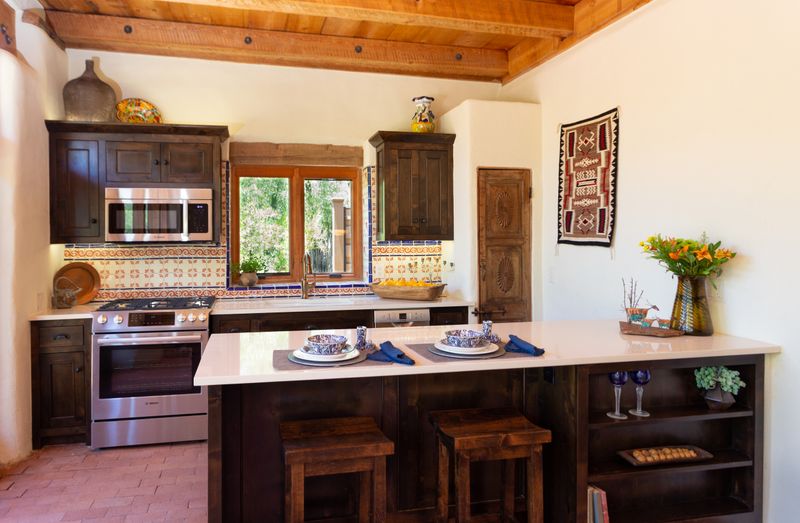
Thoughtful Southwestern touches add authentic regional character without overwhelming the space. Small doses of turquoise, sunset oranges, or cactus greens create visual interest against neutral backgrounds.
Local pottery or handwoven textiles make meaningful decorative elements. These cultural accents connect your kitchen to the rich heritage of our region while creating a space that feels genuinely rooted in place rather than imported from a national design magazine.
16. Mixed Textures: Adding Depth Without Visual Clutter
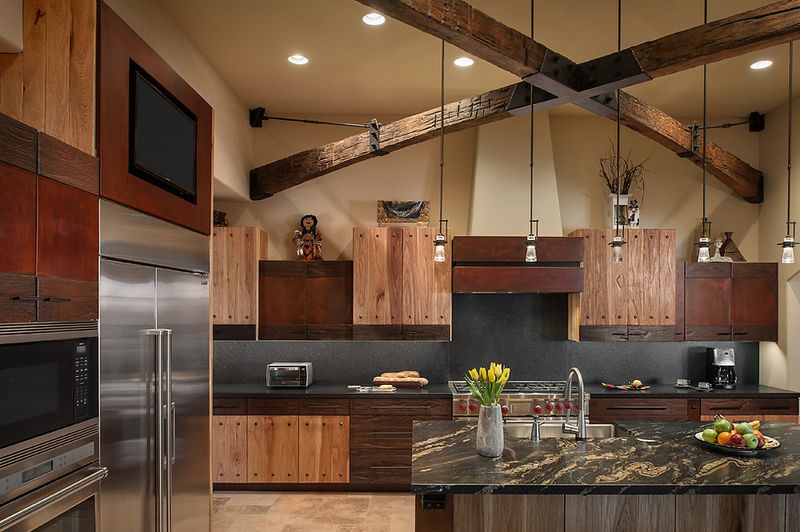
Combining wood, stone, and woven elements creates visual interest without busy patterns. These textural variations add depth while maintaining a clean, uncluttered aesthetic that works beautifully in our dust-prone environment.
Natural materials age gracefully in our climate. The interplay of smooth and rough textures mimics our diverse landscape, where smooth sand dunes exist alongside rugged mountains. It’s bringing subtle environmental harmony to your kitchen design.
17. Efficient Layouts With Shade Considerations: Practical Desert Design
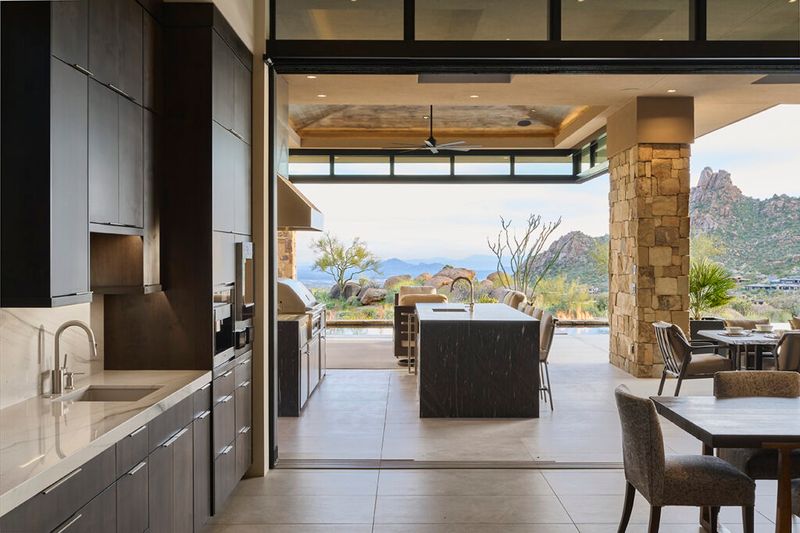
Strategic kitchen layouts place work zones away from direct sunlight during peak heat hours. Thoughtful window placement captures desert views while minimizing heat gain.
Work triangles designed with our climate in mind reduce unnecessary movement during hot months. The most successful Arizona kitchens consider the sun’s path throughout the day and year, positioning key elements to maximize comfort regardless of season.
18. Energy-Efficient Appliances: Necessity, Not Luxury
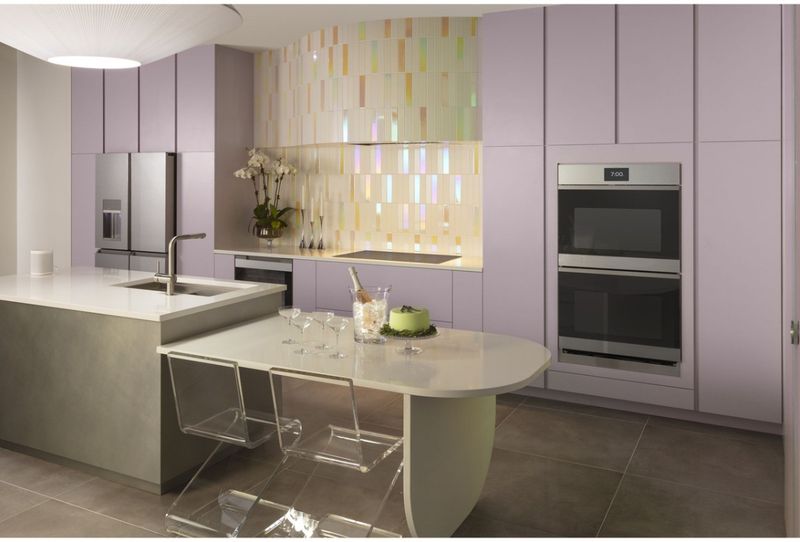
High-efficiency appliances pay for themselves quickly in our extreme climate. Energy-saving features reduce heat output while lowering utility bills during months of constant air conditioning.
Induction cooktops generate minimal ambient heat compared to gas ranges. The best desert kitchens incorporate appliances specifically rated for high-temperature environments. Meanwhile, ensuring optimal performance even during the hottest months when standard appliances might struggle or fail completely.
19. Indoor-Outdoor Kitchen Flow: Desert Living At Its Finest
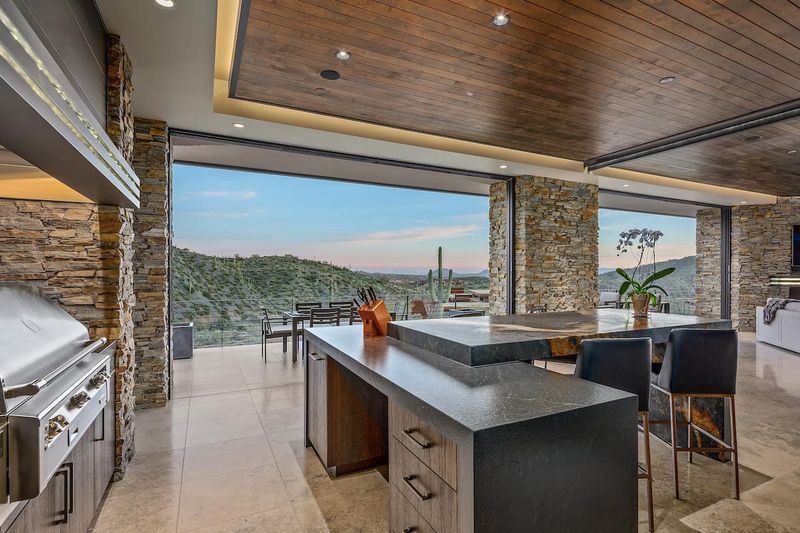
Seamless transitions between indoor and outdoor cooking spaces maximize livable areas during pleasant months. Large sliding doors create flexible spaces that can be fully opened during perfect weather or sealed tight during dust storms.
Outdoor kitchen areas with proper shade structures extend living space. The most successful desert homes treat the distinction between indoors and outdoors as fluid rather than fixed, allowing residents to enjoy our incredible climate when it’s at its best.

